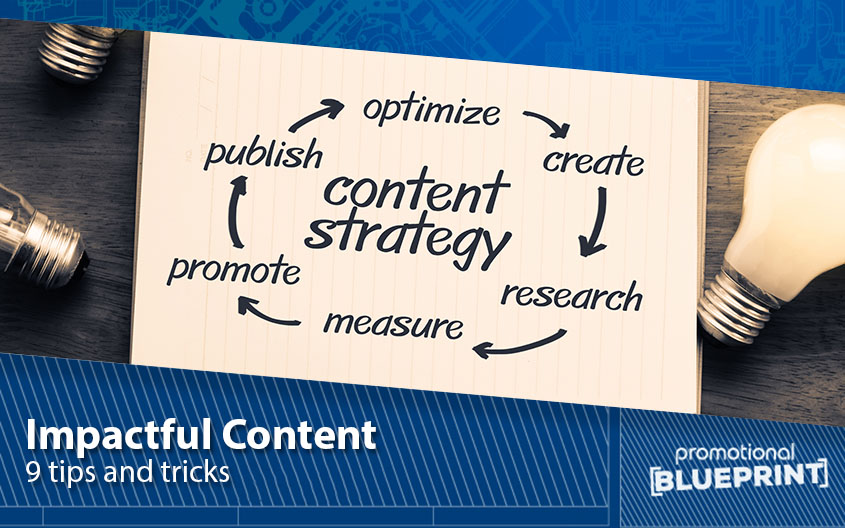
We love our smartphones and the fact Google is always there for us to make us feel less dumb in social settings. Unfortunately, there’s no denying that our access to technology has also made our attention spans super-short.
Engaging and exciting readers right off the bat may seem too challenging to some businesses. Luckily, there are a few tricks to making your content feel fresh, engaging, thrilling, and educational without being preachy. Let’s start with the most troublesome first — the headline.
Think of a Truly Fantastic Headline — But Avoid Confusing Clickbaits
The subheading may seem a bit harsh, but in reality, you only have a few seconds to grab the reader’s attention and hold onto it. The headline is the first thing they will read, so naturally, it has to be beyond captivating.
The headline is the initial impression, or rather, it tells the reader what they can expect to learn from reading a certain article. In that regard, it is clickbait and thus must be appealing.
Keep in mind, though, that you mustn’t delve into the horrible clickbait trends that are so common nowadays. Confusing readers or promising things they won’t learn about in your content is a surefire way of losing them forever.
Instead, try to promise a pain point resolution in the headline that would both stir up negative emotions and, at the same time, inspire some hope in the reader. Alternatively, be descriptive to further explain what they can expect from the article.
Of course, if there are some numbers involved, such as in listicle articles, always include the number in the headline. That’s another promise you’re bound to keep!
Get Your Hook Just Right
You got readers to go through your headline and continue reading. Now, it’s time to reel them in with your hook!
As you only have a few seconds to grab their attention, the first sentence you write has to be not only valuable but intriguing. It has to set the tone for the rest of the article and be interesting enough for the reader to demand you to tell them more!
Simple statements won’t do here, of course; you would be better off adding curious statistics, shocking the readers with a story, or using a reputable quote.
Another option is to start with a question your readers might have been asking themselves. Just make sure not to overdo it. Your article is meant to answer questions, not pose an endless number of new ones!
In essence, try to be the reader when writing those first few sentences. Consider what you would like to find out in the article and why the questions the readers may have are so important.
Remember that through your content, you’re looking to set yourself apart as a thought leader. To achieve that, you must always consider the value you’re bringing to the table — and if the information you’re about to share truly matters and needs to be heard loud and clear!
Valuable Content Is King
In line with our previous point, know that you have to achieve a few goals through your content. For instance, you may want to tell a story, hit and resolve a pain point, emphasise what’s going on in your industry or promote some of your products.
Businesses often focus on just a few of these as they believe those only will help them achieve their goals. In reality, you have to diversify your content frequently so as not to bore the readers and drive them away.
The more effort you put into making your content useful, the better. Of course, you should have sales-oriented posts from time to time. However, aim to sprinkle them in, not annoy the readers with them every week.
That said, don’t rely only on your industry knowledge to share thoughts and ideas with your audience. As a thought leader, you should be able (and willing) to ask other leaders for their opinions and convey their messages to your readers.
That way, you would show that you are a true team player that isn’t looking to undermine the competition. And trust us — your audience will thank you for giving them a chance to learn from other experts!
Make the Content Easy to Scan
Long-form content is a favourite of search engines, but simply reading a huge block of text isn’t going to cut it for your readers. To make both parties happy, you have to make your content scannable and thus easy to read.
The way you go about this is pretty logical: you have to break up the text into smaller, more digestible pieces. Every part should have its own heading or subheading. Each section should also consist of a few smaller paragraphs.
Lists are a great option as well, as they rarely devalue the article but instead make it even more scannable (and thus more useful to the readers). Bulleted or numbered lists work best, but remember to use them only when it’s appropriate!
Finally, you can (and should!) break up the text with some gorgeous images. Provided these are related to the topic of your content, they should make it feel complete. Remember that you’re looking to create authoritative content, not something that resembles instructions on a shampoo bottle. There has to be a story there, and you, as a storyteller, have to craft it correctly!
Distinguish Yourself With Power Words
You may now have an idea of how to grab the readers’ attention fast. The problem is — if everyone else is doing the same thing, how on Earth can you set yourself apart?
The trick is to avoid being a copycat. Instead, focus on unconventional methods that surprise readers each time!
One option is to use power words that grab attention instantly and help keep it for long enough to drag the readers into your content. These words trigger an emotional or psychological response, so their persuasiveness is incredibly high!
Some of the ways you can implement power words include but aren’t limited to:
Piquing the Reader’s Curiosity With Negativity
It may sound strange, but negativity helps bring in the audience. Consider using words like never, stop, fail, lose, avoid and similar to both hit a pain point and offer a glimmer of hope!
Being a Bit Mysterious in the Headline
Don’t give away everything yet. Instead, make your headline a bit enigmatic so that the reader’s interest in the article surges fast.
Headlines that start with How and similar words do this job quite well. Alternatively, you can keep the mystery alive by promising the reader they’ll learn something new but not giving them a clear answer yet — just a number of things or facts that await them in your content.
Showing How Excited You Are About Your Content
You know that what you have to say is important and everyone should hear it. Let that excitement show in your content by using specific words that trigger the urgency you want the readers to feel. If the topic you’re trying to announce or introduce is thrilling, dazzling, breathtaking, genius, and unforgettable, there’s a better chance your readers will itch to learn more about it!
What About Stories?
We’ve mentioned that you are a storyteller, so it’s obvious that you can use your own stories in your content. In fact, it’s actually encouraged as it would help your readers to identify with you more and thus strengthen your bond.
If the stories you want to tell aren’t yours, get permission to convey them to your audience. In any case, though, remember that the stories have to sound real and stir up emotions. Readers looking for solutions and answers to their burning questions want to know how real people deal with their problems. Give them that, and they’ll be far more likely to stick with you!
Inspire With a Powerful Call to Action
Once you reach the end of your article or blog post, you’re ready to finally ask the readers to do something. If you’ve kept your word and delivered on all your promises, they ought to listen to you now.
The thing is, though, you cannot always ask them to buy your products. Instead, save that for a few special pieces of content you will post throughout the year. In any other post, consider asking them to:
- Share your content on social media if they find it inspiring and educational.
- Say what they thought about the post in the comments below to exchange ideas with other readers.
- Read another article or blog post where they could learn more about the topic you just discussed.
The key here is to pick CTAs that don’t necessarily benefit you only. The reader should also recognise which benefits they’ll gain from doing what you say.
And if the CTA is actually a positive one that brings them more knowledge and more practical tips, you should rise in their eyes as a thought leader. Soon enough, the word would spread, and your content would gain in authority and slowly turn you into a real force to be reckoned with in your industry!
You may also like:
Marketing Tips
If you need even more info about content creation or any other related subject, we are here for you. Give us a call at 0800 0148 970 or simply email us today.






